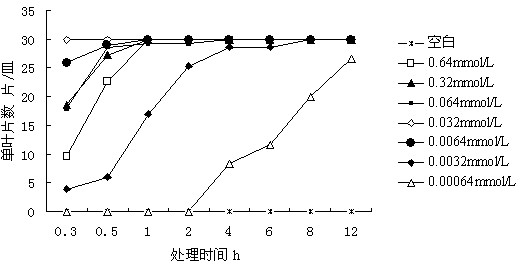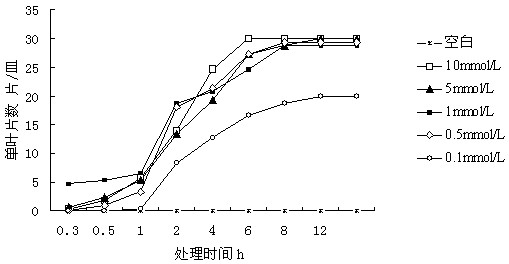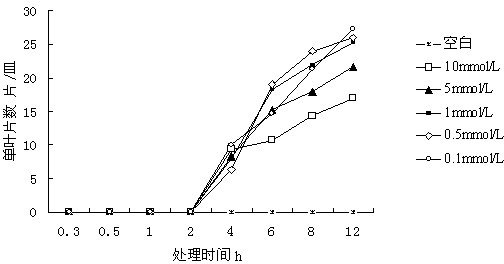Method for evaluating biotoxicity of heavy metal by duckweed
A biological toxicity and heavy metal technology, applied in the direction of material inspection products, test water, etc., can solve the problems affecting the accuracy of toxicity test results, the low daily growth rate of the control group, and the accuracy of the control test, so as to optimize the chronic toxicity test , shorten the test time, reduce the effect of human subjective factors
- Summary
- Abstract
- Description
- Claims
- Application Information
AI Technical Summary
Problems solved by technology
Method used
Image
Examples
Embodiment Construction
[0027] Test materials: duckweed (Lemna minor Linn), petri dish, incubator, sewage samples containing heavy metals; time: 2010.6~2010.12; temperature: 25°C.
[0028] Experimental procedure:
[0029] 1. Stock culture
[0030] Duckweed was inoculated in STEINBERG medium at 25°C under continuous light (85~135uE / m 2 / s 1 (400~700nm)) conditions for water quality testing, STEINBERG medium formula is as follows:
[0031] STEINBERG medium formula (pH 5.3~5.7)
[0032]
[0033] Note: adjust the pH with 0.1mol / L HCl or NaOH
[0034] 2. Test steps:
[0035] a. Dilute the water to be tested into different concentration gradients (at least five concentration gradients) with pure water, and repeat each concentration three times;
[0036] b. Select 10 duckweed plants of the same size (each plant contains three fronds), cut their roots into 1mm and culture them in the test water sample (compare the difference in absorption intensity to toxic substances);
[0037] c. Continuous li...
PUM
 Login to View More
Login to View More Abstract
Description
Claims
Application Information
 Login to View More
Login to View More - R&D
- Intellectual Property
- Life Sciences
- Materials
- Tech Scout
- Unparalleled Data Quality
- Higher Quality Content
- 60% Fewer Hallucinations
Browse by: Latest US Patents, China's latest patents, Technical Efficacy Thesaurus, Application Domain, Technology Topic, Popular Technical Reports.
© 2025 PatSnap. All rights reserved.Legal|Privacy policy|Modern Slavery Act Transparency Statement|Sitemap|About US| Contact US: help@patsnap.com



